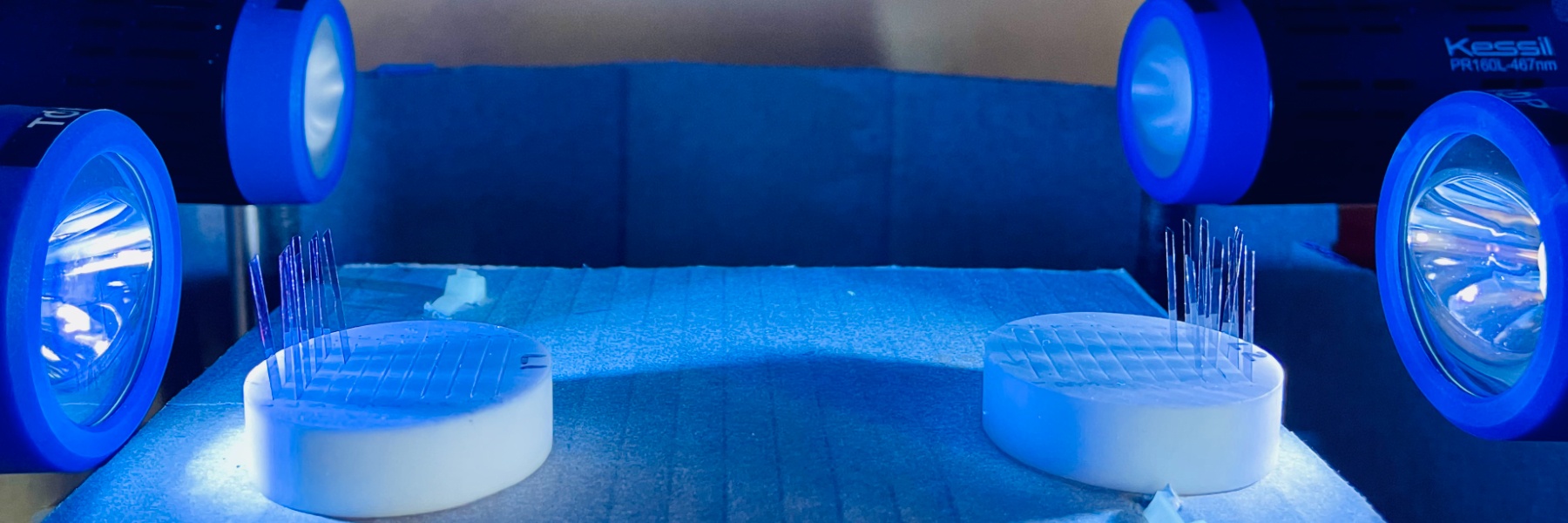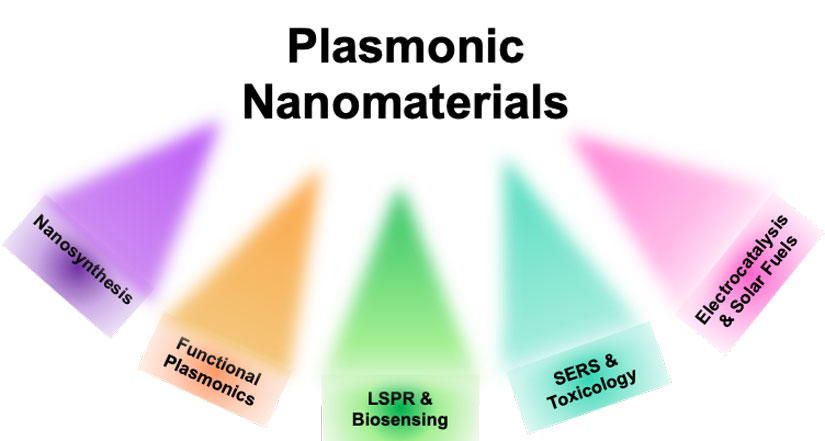Research in the Sardar group focuses on the investigation and manipulation of plasmonic properties of inorganic (metal and semiconductor) nanomaterials. In particular, the group aims to design new colloidal synthetic methods (“Nanosynthesis”) to create unique shapes and composition of plasmonic nanocrystals, which are further functionalized with chemical entities to generate emergent nanocrystal-ligand interface (functional plasmonic) to enhance the plasmonic properties of inorganic-organic hybrid conjugates. The chemistry of these interfaces is the key to fine tuning the localized surface plasmon resonance (LSPR) and surface-enhanced Raman scattering (SERS) properties of nanocrystals to develop ultrasensitive nanosensors, and effective and inexpensive electrocatalysts, and therefore addressing the needs to improve disease diagnosis and enable a low-carbon energy.
Our research combines nanomaterial synthesis and extensive analytical characterizations, and in-house computation modeling and calculations to understand the emergent properties and functions of plasmonic nanocrystals. Specifically, we employ a range of sophisticated characterization techniques including SEM, TEM, AFM, XPS, UPS, UV-Vis-NIR, ellipsometry, NMR, EPR, Raman, FTIR, TGA, and electrochemistry to investigate structure-property relationships that guide the research in new directions. Furthermore, we conduct in-house, and/or with collaboration, density functional theory calculations and molecular dynamic simulations to examine structural and optoelectronic properties. In the nanometer regime, the device scale properties of nanomaterials can be controlled by appropriate materials design, functionalization with selectively chosen ligands, and finally, self-assembly onto a solid surface. All these key factors dictate highly effective charge generation and transfer for several important applications of plasmonic nanomaterials. The cycle of research in the group involves following these trajectories:
- Investigation of Fundamental plasmonic properties of noble metal and metal-oxide nanocrystals functionalize with unique organic and organometallic ligands (“Functional Plasmonics”).
- Construction of ultrasensitive, solid-state nanoplasmonic biosensors for multiplexed and high-throughput biomarker assays for predictive, at-risk and early disease detection and diagnostics, such as for cancer and gestational diabetes (“LSPR & Biosensing”).
- Fabrication of unique SERS substrates for multimodal toxicological drug detection from emergency room patient plasma samples for forensic science purposes (“SERS & Toxicology”).
- Development of non-precious metal nanocrystal-impregnated cathode and anode electrodes in polymer electrolyte membrane electrolyzers for solar fuel generation (”Electrocatalysis & Solar Fuels”).









